How Corrugated Pallets Are Revolutionizing Lightweight Shipping for CPOs
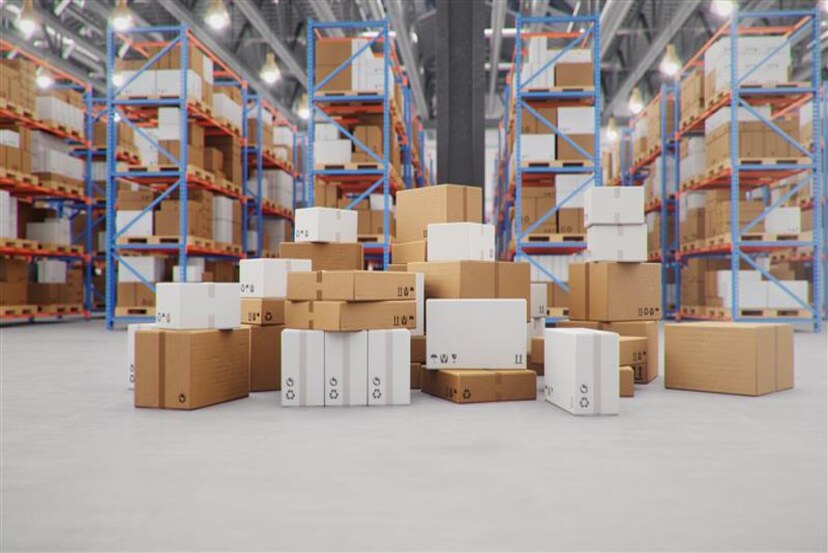
How Corrugated Pallets Are Revolutionizing Lightweight Shipping for CPOs
In today’s fast-paced logistics and supply chain industry, efficiency and cost-effectiveness remain top priorities for Chief Procurement Officers (CPOs).
The demand for lightweight shipping solutions has skyrocketed, particularly with the rise of e-commerce fulfillment, air freight, and last-mile delivery.
Traditional wooden and plastic pallets, though widely used, often add excessive weight and drive-up shipping costs while raising environmental concerns.
Enter corrugated pallets—a revolutionary alternative that is transforming how businesses approach shipping.
These lightweight, recyclable pallets not only reduce transportation expenses but also support sustainability efforts.
As industries move toward greener supply chains, corrugated pallets are becoming an essential component of modern logistics.
Understanding Corrugated Pallets
Corrugated pallets are crafted from high-strength corrugated cardboard, engineered to withstand heavy loads while remaining much lighter than wooden or plastic pallets.
Unlike traditional pallets, they are fully recyclable and biodegradable, making them an eco-friendly choice for companies aiming to reduce their carbon footprint.
How Do Corrugated Pallets Differ from Wooden and Plastic Pallets?
- Weight: Wooden pallets are heavy, often adding substantial shipping costs. Plastic pallets, while lighter than wood, still contribute to unnecessary weight.
In contrast, corrugated pallets are up to 80% lighter than wooden pallets, resulting in significant transportation cost savings.
- Sustainability: Wooden pallets contribute to deforestation and require chemical treatments to prevent pest infestations.
Plastic pallets, though reusable, present disposal challenges because they take a long time to decompose.
Corrugated pallets, being made from recycled materials, are 100% recyclable and reduce waste.
- Cost-Effectiveness: The production cost of corrugated pallets is significantly lower than that of plastic or wooden pallets.
Additionally, their lightweight nature reduces fuel consumption in shipping, further cutting logistics costs.
- Safety & Hygiene: Wooden pallets often splinter and harbor bacteria or pests, posing contamination risks in industries like food and pharmaceuticals.
Plastic pallets, though more hygienic, can be expensive. Corrugated pallets eliminate these risks while maintaining affordability.
The Benefits of Corrugated Pallets for Lightweight Shipping
1. Reduced Shipping Costs
The lightweight nature of corrugated pallets translates directly into cost savings in freight charges.
For air freight and last-mile delivery—where every kilogram matters—this reduction in weight can lead to substantial financial benefits. Moreover, lower fuel consumption helps businesses cut overall transportation expenses and reduce carbon emissions.
2. Enhanced Supply Chain Efficiency
Corrugated pallets are easy to handle, stack, and dispose of. Their lightweight structure simplifies warehouse operations and reduces handling time, improving supply chain efficiency.
Moreover, they can be customized to fit different product specifications, further optimizing storage and transport.
Businesses using automated warehouses and robotics also benefit from the reduced weight, enhancing automation efficiency.
3. Eco-Friendly and Sustainable
With increasing regulations and corporate commitments to sustainability, businesses are seeking greener alternatives to traditional packaging materials.
Corrugated pallets are made from recycled paperboard and can be repurposed, aligning with circular economy initiatives and reducing landfill waste.
Many companies are also shifting towards eco-friendly materials to comply with global sustainability standards and consumer expectations.
4. Improved Worker Safety
Heavy wooden pallets pose risks such as splinters, injuries, and manual handling strains.
Corrugated pallets eliminate these hazards, making them safer for workers handling shipments in warehouses and distribution centers.
Additionally, their lightweight structure reduces workplace injuries related to lifting and moving pallets, ensuring better employee well-being.
5. Ideal for E-Commerce Fulfillment
E-commerce logistics demand efficiency and cost-effectiveness.
Lightweight and recyclable corrugated pallets help e-commerce businesses reduce shipping costs, optimize space, and ensure seamless fulfillment operations, making them a preferred choice in this sector.
Faster handling and reduced storage requirements further benefit high-volume fulfillment centers.
6. Adaptability to Various Industries
Corrugated pallets are not limited to e-commerce and retail, but they are increasingly used in industries such as pharmaceuticals, food and beverage, and electronics due to their contamination-free nature.
Their hygienic properties make them an excellent choice for sectors where cleanliness and regulatory compliance are critical.
The Future of Lightweight Shipping with Corrugated Pallets
The logistics industry is evolving, with increasing emphasis on cost reduction, efficiency, and sustainability.
Several global companies are already transitioning to corrugated pallets to meet their shipping and environmental goals.
As innovations in material strength and durability continue, the adoption of corrugated pallets will only grow.
Furthermore, industries that prioritize hygiene, such as pharmaceuticals, food and beverage, and electronics, are increasingly recognizing the benefits of corrugated pallets due to their contamination-free nature.
Thanks to design advancements, corrugated pallets can now handle heavier loads without sacrificing durability. Companies investing in sustainable supply chain solutions will find corrugated pallets a strategic asset for achieving long-term operational and environmental goals.
Retailers and manufacturers are also exploring hybrid pallet solutions—combining corrugated materials with reinforced edges or plastic coatings to enhance durability while maintaining the lightweight benefits.
As the demand for sustainability grows, more organizations will integrate corrugated pallets into their logistics strategies.
Conclusion
Corrugated pallets are transforming the logistics industry by offering an innovative solution for lightweight shipping.
By reducing costs, improving efficiency, and supporting sustainability, they provide a viable alternative to traditional wooden and plastic pallets.
With rising demand for air freight, e-commerce, and last-mile delivery, these pallets are set to play a crucial role in the future of shipping and supply chain management.
Moglix Packaging Benefits: As industries transition to sustainable shipping solutions, Moglix offers high-quality, durable, and customizable corrugated pallets that cater to diverse shipping needs.
Our eco-friendly packaging solutions help businesses reduce costs while meeting sustainability targets, ensuring a smarter, greener future for logistics.
By integrating corrugated pallets into your supply chain, you not only enhance efficiency but also contribute to a more sustainable planet—one shipment at a time.
As demand for innovative, eco-friendly logistics solutions grows, corrugated pallets are proving to be a game-changer for businesses seeking a balance between cost-efficiency and sustainability.
Primary vs. Secondary Packaging: How CPOs Can Make the Right Choice for Procurement Success

Primary vs. Secondary Packaging: How CPOs Can Make the Right Choice for Procurement Success
In a competitive market, packaging is essential for product protection, branding, and logistics.
Chief Procurement Officers (CPOs) are tasked with making strategic packaging choices that balance cost-effectiveness, product protection, and brand appeal.
Understanding primary and secondary packaging helps businesses optimize costs, ensure product safety, and enhance market appeal.
This article will explore the key differences between these two packaging types and offer insights into how CPOs can leverage them for optimal results.
Understanding Primary and Secondary Packaging
Effective packaging is more than just a container; it’s an integral part of the product experience.
It serves several critical functions, from protecting the product during transit to communicating brand messaging to the consumer.
This is where the distinction between primary and secondary packaging becomes important.
Primary packaging, or consumer packaging, is the first layer that directly encases the product to protect, preserve, and enhance consumer experience.
Its primary purpose is to contain, protect, and preserve the product’s quality, freshness, and safety.
It’s the packaging the consumer interacts with directly when using the product. Consider these examples:
- A glass bottle containing a fragrance
- A blister pack holding individual tablets of medication
- A sealed pouch of coffee beans
- A wrapper around a chocolate bar
Choosing primary packaging depends on factors like material durability, regulatory requirements, and product sensitivity to environmental conditions.
For instance, food products often require specialized materials that prevent contamination and maintain freshness.
Pharmaceuticals demand packaging that protects against light, moisture, and tampering.
Secondary packaging, or transit packaging, is used to bundle, transport, and protect multiple units of primary packaging.
It’s the outer layer that bundles multiple units of primary packaged products together for efficient storage, transportation, and distribution.
It also provides an additional layer of protection against physical damage during handling and shipping. Examples include:
- A corrugated cardboard box containing multiple bottles of shampoo
- A shrink-wrapped bundle of pharmaceutical blister packs
- A printed carton displaying branding and product information for retail shelves
- Pallets used for bulk shipping
Secondary packaging plays a vital role in logistics, ensuring that products reach retailers and consumers in good condition.
It plays a key role in branding, logistics, and compliance by displaying product information, barcodes, and sustainability labels.
How CPOs Can Make the Right Choice for Business Success
CPOs must strategically balance cost, efficiency, and sustainability in packaging decisions.
By carefully considering the following factors, they can make informed decisions that contribute to business success:
- Product Requirements: The nature of the product is the most crucial factor.
CPOs need to understand the specific protection requirements, shelf-life considerations, and any regulatory obligations related to the product.
For example, food products may require specialized packaging to maintain freshness and prevent spoilage, while hazardous materials require packaging that prevents leaks and spills.
- Cost Optimization: Packaging costs can significantly impact the overall product cost.
CPOs should explore various materials and designs to find the most cost-effective solutions without compromising on quality or protection.
This involves considering factors like material costs, manufacturing processes, and transportation expenses.
Negotiating favorable contracts with packaging suppliers is also essential.
- Supply Chain Efficiency: Packaging plays a vital role in the efficiency of the supply chain.
CPOs should consider how packaging design affects storage, handling, and transportation.
Optimizing packaging dimensions and weight can reduce shipping costs and improve warehouse space utilization.
Standardized packaging can also streamline logistics processes.
- Brand Enhancement: Packaging is a powerful tool for brand communication.
CPOs should work with marketing teams to ensure that packaging aligns with the brand’s overall messaging and visual identity.
Attractive and informative packaging can enhance the consumer experience and drive sales.
- Sustainability: Increasingly, consumers are demanding sustainable packaging solutions.
CPOs should explore eco-friendly materials and designs that minimize environmental impact.
This includes considering factors like recyclability, biodegradability, and the use of renewable resources.
Partnering with suppliers who prioritize sustainability is also crucial.
- Supplier Collaboration: Building strong relationships with packaging suppliers is essential for CPOs.
Collaborating with suppliers can lead to innovative packaging solutions, cost savings, and improved supply chain efficiency.
CPOs should seek suppliers who offer high-quality products, competitive pricing, and reliable service.
Conclusion
Optimizing primary and secondary packaging directly improves cost-efficiency, logistics, and brand reputation.
By understanding the functions of each packaging type and considering the key factors outlined above, CPOs can make informed choices that optimize costs, protect products, enhance brands, and improve supply chain efficiency.
A data-driven packaging strategy enhances customer trust, sustainability, and competitive advantage.
For inquiries regarding optimized packaging solutions for your business, mail your inquiries to info@moglixbusiness.com
The Role of Smart Packaging in Enhancing Supply Chain Efficiency: A Guide for CPOs
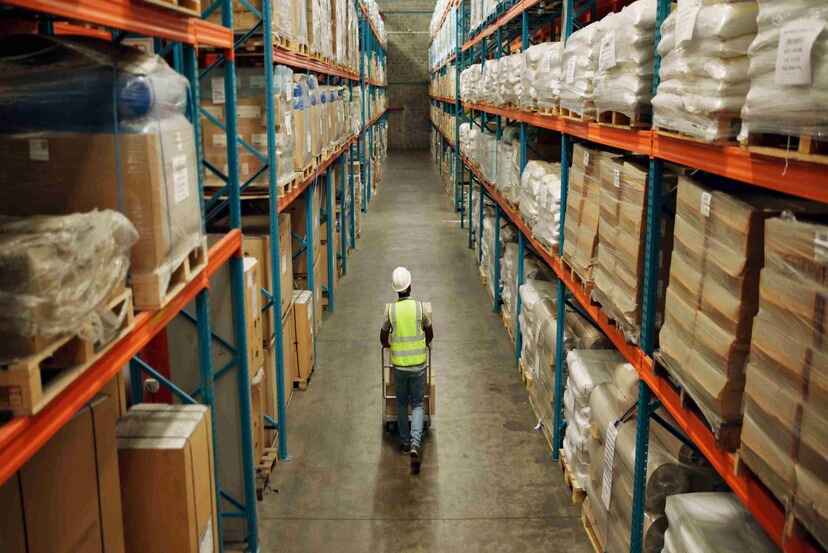
The Role of Smart Packaging in Enhancing Supply Chain Efficiency: A Guide for CPOs
In today’s competitive market, supply chain efficiency is paramount for businesses striving to reduce costs, improve sustainability, and enhance operational effectiveness.
One of the key innovations driving this transformation is smart packaging.
By integrating connected packaging solutions, procurement leaders can leverage real-time insights and automation to optimize logistics, reduce waste, and ensure product integrity.
Smart packaging is now a necessity, driving efficiency in modern procurement strategies.
What is Smart Packaging?
Smart packaging incorporates advanced technologies to enhance the functionality of traditional packaging. It falls into two main categories:
- Active Packaging: Designed to extend product shelf life by controlling environmental factors such as moisture, oxygen levels, and temperature.
- It’s particularly useful in industries like food and pharmaceuticals.
- Intelligent Packaging: Equipped with sensors, QR codes, RFID tags, and IoT-enabled solutions to provide real-time data on product conditions, location tracking, and authentication.
- It will ensure transparency and security in the supply chain.
Examples of IoT packaging include temperature-sensitive indicators for pharmaceuticals, RFID-enabled tracking for logistics, and QR codes for customer engagement and product verification.
These technologies help businesses improve efficiency, reduce losses, and enhance customer satisfaction.
Why CPOs Should Prioritize Smart Packaging Innovation?
CPOs drive supply chain transformation by adopting smart packaging.
These innovations enhance visibility, reduce inefficiencies, and ensure compliance.
Additionally, smart packaging aligns with sustainability goals by minimizing waste and optimizing material usage.
As companies push for supply chain efficiency, investing in smart packaging can lead to long-term cost savings and a competitive edge.
How Smart Packaging Enhances Supply Chain Efficiency
- Real-time Tracking & Transparency: RFID and IoT-enabled packaging allow businesses to track shipments, monitor conditions, and prevent counterfeiting.
- Improved Inventory Management: Automated inventory tracking reduces stockouts, overstocking, and manual errors, leading to better forecasting and planning.
- Cost Reduction: Preventing spoilage and damage lowers product losses, while smart logistics streamlines transportation and warehousing.
- Sustainability Gains: Smart packaging reduces material waste and supports circular economy initiatives by enabling reusability and recyclability.
- Enhanced Customer Experience: Interactive packaging solutions, such as QR codes and NFC tags, provide product information, authenticity verification, and engagement opportunities.
Challenges in Adopting Smart Packaging
While the benefits are clear, businesses may face challenges such as:
- High Initial Investment: Implementation costs for connected packaging solutions can be substantial, requiring careful ROI analysis.
- Integration Complexities: Smart packaging requires compatibility with existing supply chain efficiency systems and IT infrastructure.
- Data Security & Compliance: Ensuring secure handling of IoT packaging data is critical to maintaining compliance with regulations and protecting against cyber threats.
- Limited Awareness & Expertise: Many businesses lack the technical expertise to implement smart packaging effectively, requiring strategic partnerships with technology providers.
Trends in Smart Packaging
- AI & Machine Learning: Enhancing predictive analytics for inventory and logistics optimization.
- Blockchain Integration: Improving traceability and transparency across the supply chain, reducing fraud and counterfeiting.
- Eco-friendly Materials: Combining sustainability with smart technology for greener packaging solutions.
- Augmented Reality (AR) & NFC: Providing an interactive experience for consumers and businesses through digital content embedded in packaging.
Conclusion
As supply chains become more complex, embracing smart packaging is no longer optional but a necessity for procurement leaders.
By leveraging IoT packaging and connected packaging technologies, businesses can achieve greater efficiency, cost savings, and sustainability.
Looking to enhance packaging efficiency? Explore smart, sustainable packaging solutions with Moglix contact us for E2E Packaging supply Chain innovations.
Contact us today to explore tailored solutions that align with your business goals. Mail your inquiries to info@moglixbusiness.com
Empowering CPOs with Moglix: Transforming Packaging Procurement for India’s Second Largest Paint Company
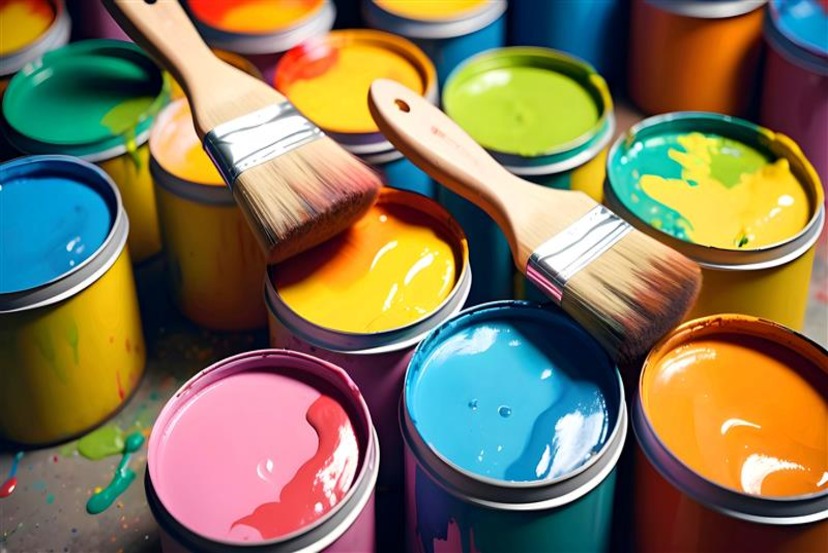
Empowering CPOs with Moglix: Transforming Packaging Procurement for India’s Second Largest Paint Company
Moglix has emerged as a game-changer for CPOs in the paints and coatings industry, especially through its transformative collaboration with India’s second-largest paint manufacturer.
Let’s dive deeper and see how they achieved exceptional results.
Procurement Problem Statement of The Paints Company
India’s packaging supply chain has traditionally been fragmented, especially in the paints and coatings sector.
Packaging vendors were confined to a few towns, and the procurement process was frequently exhausting, inefficient, and subject to delays.
Additionally, to meet the rising demand for diverse SKUs, organizations frequently onboarded new suppliers on an ad hoc basis, further complicating the procurement process.
These complexities began to have an impact not only on overall cost but also on product delivery delays at India’s second-largest paint firm.
The company faced the following issues:
- A fragmented supply chain and insufficient supplier coverage.
- Ad hoc supplier onboarding, resulting in variable quality and delivery.
- Ineffective logistics with several 3PL partners leads to slow delivery times and expensive operational costs.
For the CPO, the responsibility to eliminate these difficulties, maintain high-quality packaging materials, and ensure swift delivery across India was crucial.
The Moglix Solution: Optimizing Packaging Procurement
Moglix partnered with India’s second-largest paint company to revolutionize packaging procurement across India. Here’s how we delivered impactful solutions:
1. Consolidated Packaging Supply Chain Across India
By utilizing superior technological capabilities, Moglix implemented a single-window purchase system.
This approach enabled seamless procurement from over 10 locations across India, ensuring consistent quality.
Curious about the result? A consolidated and streamlined procurement process eliminated unnecessary and redundant steps, which in turn reduced dispensable complications.
2. Strategic Sourcing and Supplier Relationship Management
Moglix adopted a strategic sourcing approach to enhance supplier reliability and cost efficiency.
Reducing vendor dependence allowed the company to focus on long-term goals, leading to cost savings, improved quality, and superior service.
This method resulted in a 3% cost savings for packaging materials.
3. Packaging Innovation & Sustainability
Our goal was not limited to cost reductions. Moglix also leveraged packaging sustainability initiatives by using eco-friendly materials and reducing packaging waste.
This enabled the paint industry to achieve its sustainability goals while also improving their packaging.
4. Supply Chain Optimization and Logistics Efficiency
Previously, the logistics cycle was tedious and time-consuming due to the involvement of several 3PLs.
Moglix addressed this by consolidating the number of logistics partners into a single 3PL supplier, resulting in substantial time savings. The results were amazing.
- The process time was shortened to 48 hours.
- Cycle time was shortened to three days.
- The turnaround time (TAT) was reduced from 8 to 6 days.
This change not only enhanced delivery speed but also significantly improved OTIF performance, which rose to an amazing 98% across India.
The Impact of Moglix’s Solutions
The strategic partnership between Moglix and India’s second-largest paint company has yielded actual and tangible results, allowing CPOs to make more informed and data-driven decision-making.
Moglix’s digital procurement and logistics operations resulted in a 3% reduction in packaging material costs.
By consolidating logistics under a single 3PL provider, the company achieved a 20% reduction in processing time.
The results have been highly credible that the company now has a streamlined packaging supply chain, all while maintaining high quality and environmental standards.
Conclusion
In conclusion, for CPOs in the Fast-Moving Consumer Durables industry, the packaging procurement process can be complex and costly.
Businesses can unlock cost savings and boost productivity by adopting efficient packaging procurement strategies that optimize logistics and supply chain performance.
If you are a CPO looking to revolutionize your packaging supply chain and optimize your procurement processes, Moglix is just a click away, access the full case study.
Get in touch today to streamline your packaging procurement and enhance supply chain efficiency.
2025 Procurement Outlook for Tertiary Packaging for CPOs
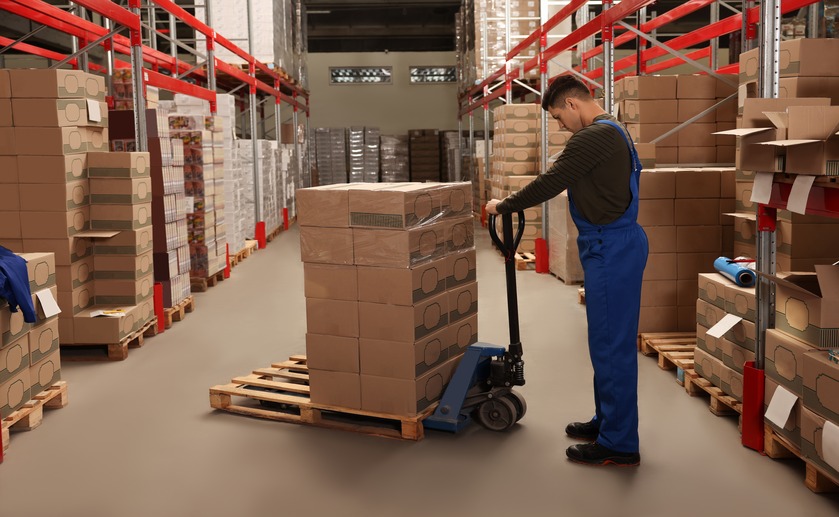
2025 Procurement Outlook for Tertiary Packaging for CPOs
Tertiary packaging materials such as pallets, wooden boxes, and corrugated boxes play a critical role in bulk transport and logistics.
In 2024, rising costs were driven by material price volatility, increased automation adoption, and evolving regulatory requirements.
As we step into 2025, what can procurement professionals expect in this evolving landscape?
Emerging Trends in Tertiary Packaging for 2025
1. Automation-Driven Optimization
The shift towards automation is gaining momentum.
Technologies such as palletizers, robotics, and automated guided vehicles (AGVs) are improving material handling efficiency, reducing errors, and lowering long-term operational costs.
Smart solutions, such as RFID tags and GPS-enabled sensors, are increasingly integrated into tertiary packaging to improve inventory tracking and logistics efficiency.
These tools not only improve visibility but also mitigate risks associated with misplacement and theft.
2. E-Commerce and Retail Logistics Boom
The rapid expansion of e-commerce has transformed tertiary packaging requirements.
Durable solutions designed for last-mile delivery and modular packaging that optimizes space and handles diverse product configurations are in high demand.
E-commerce packaging must balance durability with efficiency, ensuring goods are delivered intact while reducing transportation costs.
Modular designs, such as collapsible boxes, cater to evolving logistics needs and reduce storage complexities.
3. Cost Pressures and Material Innovations
Volatile transportation costs are fueled by rising fuel prices and are driving organizations to adopt lightweight materials.
Durable alternatives like engineered plastics and advanced composites are gaining popularity for their ability to reduce shipping weight without compromising strength.
Maximizing space utilization continues to be a primary focus.
Innovative packaging designs that maximize storage during transport, such as foldable or stackable solutions, are helping businesses save on logistics expenses while improving sustainability.
4. Regulatory and Safety Requirements
Heightened enforcement of packaging standards, particularly in industries like pharmaceuticals, food, and chemicals, has emphasized the importance of compliance.
Tertiary packaging must ensure product safety and adhere to international shipping standards.
Clear communication, including mandatory labeling for industrial and chemical shipments, is now a critical aspect of tertiary packaging.
Compliance with these standards minimizes penalties and ensures safer handling during transport.
5. Track & Trace in the Supply Chain
The integration of tracking technologies, such as barcodes, RFID tags, and QR codes, has transformed supply chain visibility.
These tools provide real-time monitoring, enabling better inventory management and faster issue resolution.
Data collected through smart packaging enables predictive analytics, allowing businesses to anticipate delays, optimize routes, and enhance supply chain operations.
This is particularly useful in managing fluctuating demands and ensuring delivery reliability.
Conclusion
In 2025, tertiary packaging is set to become smarter, lighter, and more efficient.
Procurement professionals must prioritize modular designs, advanced tracking technologies, and lightweight materials to remain competitive.
Drawing lessons from 2024, companies should align their strategies with emerging trends to enhance operational efficiency and address regulatory and cost pressures.
For more insights and projections, access our whitepaper. Mail your inquiries to info@moglixbusiness.com.
2025 Procurement Outlook for Secondary Packaging for CPOs
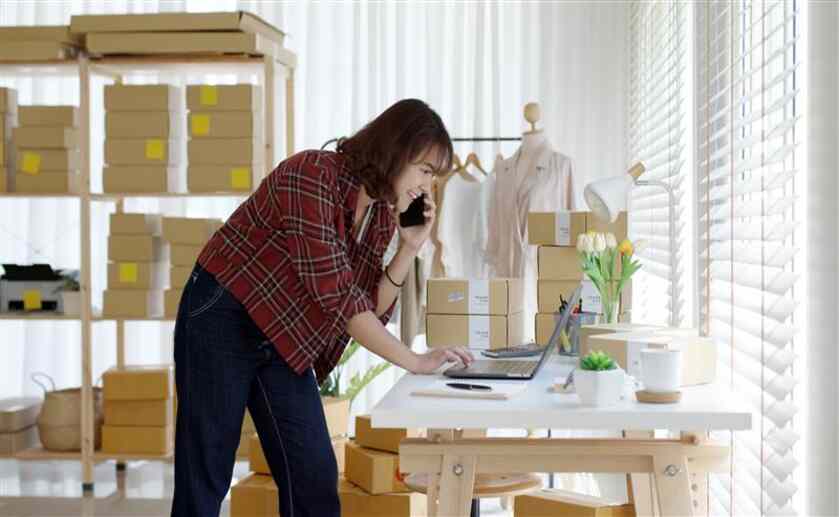
2025 Procurement Outlook for Secondary Packaging for CPOs
The procurement of secondary packaging materials like seals and barcodes, plastic crates, and woven sacks faced significant challenges in 2024.
The key cost drivers were technological advancements, increasing transportation costs, and evolving e-commerce demands.
As 2025 approaches, how can Chief Procurement Officers (CPOs) adapt to the shifting landscape and emerging trends?
Key Factors Impacting Secondary Packaging Procurement
1. Technology Integration
- Smart Packaging:
The integration of technologies, including RFID tags and advanced barcodes, is transforming supply chain management.
These features enhance tracking accuracy, streamline inventory management, and reduce losses due to mislabeling or theft.
- Automation:
Automated packaging systems are increasingly prevalent, allowing faster and more precise handling of secondary packaging.
These investments, though capital-intensive upfront, offer long-term benefits by improving operational efficiency and reducing human errors.
2. E-Commerce and Retail Evolution
- Durability and Efficiency:
The growth of e-commerce requires secondary packaging that withstands the demands of last-mile delivery while remaining lightweight and space-efficient.
Packaging solutions that optimize material use without compromising durability are gaining traction.
- Customer Experience:
Customers now expect secondary packaging to do more than protect products.
The unboxing experience is now a critical factor in customer satisfaction, encouraging businesses to create engaging and visually appealing packaging designs.
3. Cost and Material Efficiency
- Material Innovations:
The focus is shifting toward materials that are both durable and lightweight, such as advanced polymers and engineered fibers.
These materials reduce transportation costs and minimize environmental impact, aligning with sustainability goals.
- Standardization:
Modular packaging designs enable businesses to achieve economies of scale.
By reducing complexity in production and assembly, standardization helps streamline operations and lower costs.
4. Supply Chain Challenges
- Transportation Costs:
Volatile fuel prices are driving higher logistics expenses, significantly affecting the cost of transporting secondary packaging materials.
Companies must explore cost-effective shipping methods and optimize routes to mitigate this challenge.
- Supplier Consolidation:
Relying on a smaller number of suppliers can create risks related to pricing and availability.
Expanding supplier networks and building long-term partnerships are crucial strategies to reduce dependency and maintain a steady supply.
5. Single Window Procurement Solutions
CPOs are increasingly adopting integrated procurement platforms to manage their secondary packaging needs. These solutions simplify vendor interactions, improve cost transparency, and streamline order fulfillment processes. Leveraging such systems allows businesses to centralize their procurement strategies and enhance overall efficiency.
Conclusion
As 2025 approaches, the procurement of secondary packaging will require a balance between innovation and cost-efficiency.
CPOs must tackle evolving consumer expectations, technological progress, and supply chain challenges to remain competitive.
Drawing insights from 2024, businesses can position themselves for success by adopting smarter procurement practices and exploring new materials and solutions.
For in-depth projection and actionable strategies, access our comprehensive whitepaper.
Mail your inquiries to info@moglixbusiness.com.
2025 Procurement Outlook for Primary Packaging for CPOs
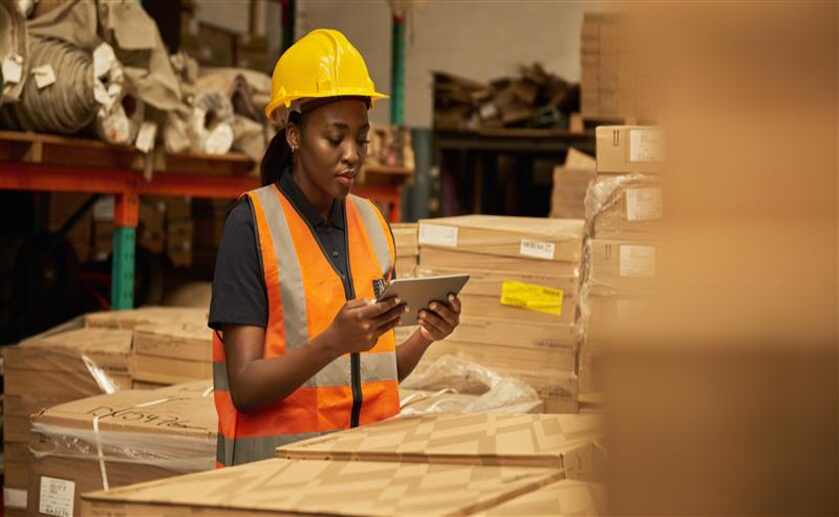
2025 Procurement Outlook for Primary Packaging for CPOs
The procurement of primary packaging materials such as polybags, VCI bags, food trays, and glass bottles faced significant cost pressures in 2024.
Key factors driving these pressures included raw material price fluctuations, regulatory compliance requirements, and rising energy costs.
As we step into 2025, the question arises: What challenges and opportunities lie ahead for Chief Procurement Officers (CPOs)?
Key Factors Impacting Primary Packaging Procurement
1. Raw Material Costs
Paper and Cardboard:
The growing demand for sustainable packaging is driving up the cost of paper-based materials.
Shortages in pulp supply, coupled with increasing transportation expenses, are expected to put additional pressure on prices in 2025.
Plastics:
Prices of virgin and recycled plastics remain influenced by crude oil market dynamics and recycling infrastructure.
With stricter regulations on single-use plastics, companies are likely to face increased compliance-related expenses.
Metal and Glass:
Aluminum, steel, and glass production processes are highly energy-intensive, leaving them vulnerable to energy price volatility. Ongoing fluctuations in global energy markets are expected to further impact procurement costs for these materials.
2. Compliance
Regulatory Compliance:
Adhering to sustainability standards, such as Extended Producer Responsibility (EPR) and carbon taxation, involves higher certification costs and redesign requirements. These regulations aim to reduce environmental impact but increase operational complexities.
Circular Economy Initiatives:
The shift towards reusable packaging and investments in recycling programs align with sustainability goals but demand significant upfront financial investment. Companies adopting these initiatives must carefully plan for long-term returns.
3. Customization and Design
Innovative Designs:
Packaging innovations, including custom shapes, multi-material combinations, and advanced graphics, enhance consumer appeal but add to production costs. These designs often require specialized production capabilities, driving expenses higher.
Digital Printing Technologies:
Digital printing enables greater flexibility and personalization for packaging solutions.
However, it can increase costs, particularly for short production runs, when compared to traditional methods.
4. Technological Integration
Smart Packaging Features:
Technological advancements in packaging, such as QR codes, RFID tags, and temperature indicators, are gaining traction.
Although these features enhance functionality, they also increase production and material costs, necessitating a clear cost-benefit analysis.
5. Volume and Batch Sizes
Economies of Scale:
Large production volumes typically result in greater cost efficiency, whereas smaller, customized orders lead to higher costs.
Balancing production scales with market demand will be critical for procurement planning.
Demand Volatility:
Shifts in consumer demand, driven by seasonal trends or global events, continue to create uncertainty in procurement strategies.
Companies must focus on building agile processes to mitigate risks associated with demand fluctuations.
Transportation Costs:
Rising fuel prices and persistent global supply chain disruptions are driving up logistics expenses for raw materials and finished packaging. Efficient transportation planning and diversified sourcing strategies will remain crucial for cost control.
Conclusion
2025 is set to bring both challenges and opportunities for the procurement of primary packaging materials.
To navigate this evolving landscape, CPOs must leverage insights from 2024, implement innovative solutions, and fortify their supply chains.
For a detailed projection and actionable insights, access our comprehensive whitepaper today.
Mail your inquiries to info@moglixbusiness.com.
Sustainable Packaging for Viksit Bharat: The Vision of Chief Procurement Officers
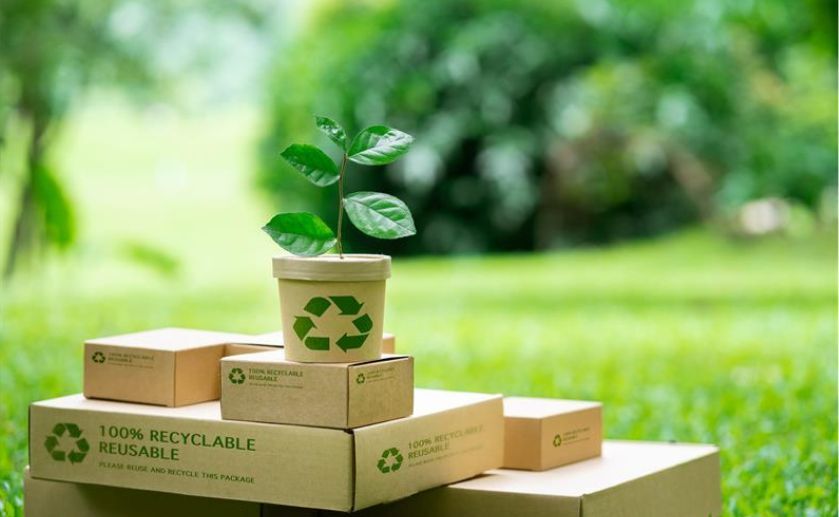
Sustainable Packaging for Viksit Bharat: The Vision of Chief Procurement Officers
As India strides towards becoming a developed nation—Viksit Bharat—it is imperative to align this growth with sustainability.
Chief Procurement Officers (CPOs) hold a critical position in this transformation by ensuring that procurement strategies support not just economic progress but also environmental responsibility.
Sustainable packaging procurement has emerged as a significant area where CPOs can contribute to this vision.
This blog explores how CPOs can lead the charge toward a greener, more resilient future for Viksit Bharat.
Understanding Sustainable Packaging Procurement
Sustainable procurement in packaging focuses on minimizing environmental impacts while providing economic and social benefits.
In India, with rising packaging demand in industries like FMCG, pharmaceuticals, and e-commerce, this presents both challenges and opportunities.
Chief Procurement Officers (CPOs) can contribute by:
- Choosing biodegradable, recyclable, or reusable packaging materials.
- Partnering with environmentally focused suppliers.
- Innovating designs to reduce material usage while ensuring functionality.
By embedding sustainability into procurement processes, CPOs can contribute significantly to the goal of Viksit Bharat while meeting global sustainability standards.
The Role of CPOs in Driving Sustainable Procurement
CPOs are uniquely positioned to champion sustainability initiatives within their organizations.
By adopting sustainable procurement strategies, they can influence every stage of the supply chain, from sourcing materials to final product delivery.
Here’s how they can contribute:
1. Setting Clear Objectives: CPOs should establish measurable sustainability goals to guide procurement efforts.
2. Collaborating with Suppliers: Building strong partnerships with eco-friendly suppliers is crucial for sustainable practices.
3. Leveraging Technology: Utilizing digital tools and data analytics helps monitor sustainability metrics and supplier performance.
4. Educating Teams: Investing in training programs fosters a culture of sustainability within procurement teams.
Sustainable Packaging Innovations for Viksit Bharat
Several sustainable packaging innovations are already making waves in the industry, offering CPOs exciting opportunities to enhance their procurement strategies. Examples include:
- Biodegradable Packaging: Materials like cornstarch, bagasse, and mushroom-based packaging are gaining popularity as eco-friendly alternatives to plastic.
- Minimalist Designs: Reducing excess material in packaging not only cuts costs but also lowers environmental impact.
- Reusable Packaging: Options like collapsible crates and refillable containers are ideal for industries with high packaging turnover.
- Smart Packaging: Incorporating technology to track and optimize packaging usage further supports sustainability goals.
By incorporating these innovations, CPOs can significantly contribute to a sustainable and resilient supply chain.
The Way Forward: Viksit Bharat Through Sustainable Procurement
As India accelerates toward Viksit Bharat, sustainable procurement must remain a priority for CPOs across industries.
By embedding sustainability into packaging strategies, CPOs can drive transformative change, making businesses more resilient while addressing global environmental challenges.
Achieving this vision requires a proactive approach: setting ambitious sustainability targets, collaborating with forward-thinking suppliers, and leveraging innovative solutions.
CPOs have the power to turn procurement into a force for good, paving the way for a greener, more equitable India.
Ready to Transform Your Packaging Strategy?
Visit our website to learn more about sustainable packaging solutions that can help you align with the vision of Viksit Bharat. Click here to explore our offerings.
Best Practices for Purchase Managers to Manage Packaging Inventory
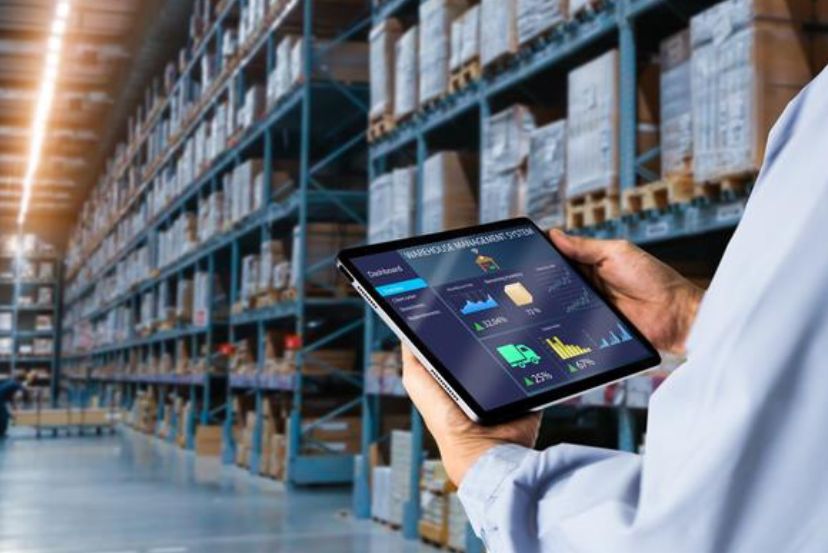
Best Practices for Purchase Managers to Manage Packaging Inventory
Efficient packaging inventory management is crucial for purchase managers to enhance operational efficiency and boost profitability.
By ensuring timely deliveries and controlling costs, effective inventory practices directly impact business success.
However, if you don’t have strategies in place, managing packaging materials can be difficult!
In this blog, we’ve put together the best tips and practices to help you simplify your processes and ensure your packaging inventory management is running smoothly.
So, without any further ado, let’s begin. But first, let’s understand packaging inventory management in detail.
Understanding Packaging Inventory Management
Packaging inventory refers to the materials used to wrap and protect products during transportation to customers or retail locations.
It includes items such as caps, lids, boxes, fillers, jars, cans, and other materials essential for ensuring products reach their destination intact.
To effectively manage packaging inventory, it’s essential to keep and monitor warehouse materials to guarantee that the required packaging supplies are on hand for production and shipment timelines.
A well-implemented packaging inventory system streamlines packing and shipping, ensuring smooth operations and timely deliveries.
Conversely, an unmanaged system can lead to delays, increased costs, and disruptions in workflow.
Understanding the fundamentals of inventory management in packaging can help procurement managers streamline supply chain operations efficiently and cost-effectively while improving customer satisfaction.
Why is Packaging Inventory Management Important?
Proper packaging inventory management is essential for several reasons:
- Smooth Operations: Guarantee that packaging supplies are consistently accessible as required to avoid any interruptions in manufacturing or delivery processes.
- Optimizing Costs: Minimizing expenses related to inventory storage and material waste.
- Customer Satisfaction: Proper packaging ensures customers receive undamaged products. This enhances customer satisfaction.
For purchase managers, managing packaging inventory effectively means striking the perfect balance between demand and supply to achieve operational excellence.
What Are the Challenges in Packaging Inventory Management?
Managing packaging inventory can be tricky, demanding time and effort and requiring a solid understanding of product flow and materials.
Here are common challenges and how effective management can help tackle them:
Space Limitations & High Storage Costs
- Storing packaging materials with products consumes valuable warehouse space, driving up costs.
- Implementing a smart inventory system optimizes storage use and informs decisions about expansion or relocation.
Inconsistent Quality of Materials
- Consistent packaging quality is critical for protecting products and preserving brand image. Variations in material quality can negatively impact customer satisfaction.
- An advanced system ensures uniformity in materials and helps maintain a rigid and consistent brand identity.
Coordination with Product Inventory
- Packaging and product inventory go hand in hand. Poor packaging management can lead to misplaced products or inaccurate stock records.
- A clear process keeps everything on track, reducing shipping costs and improving warehouse organization.
Supply Chain Delays
- Packaging supply chain issues can delay deliveries, impact sales, and frustrate customers.
- Effective management helps predict delays, explore alternative suppliers, and align orders with demand trends to keep operations smooth.
Proper packaging inventory management not only resolves these challenges but also enhances efficiency, reduces costs and improves customer satisfaction.
Benefits of Effective Packaging Inventory Management
Effective packaging inventory management offers several key benefits:
- Cost Savings: Cut expenses by reducing waste and giving accurate insights into ordering and storage.
- Improved Efficiency: Speed up packaging processes and prevent delays, leading to timely delivery of products.
- Quality Control: Increases visibility to monitor material quality closely and catch issues early.
- Sustainability: Use eco-friendly materials and reduce waste to support the environmental impact.
- Better Customer Service: Avoid delays caused by material shortages, ensuring deliveries on time and happier customers.
These benefits highlight why packaging inventory management should be a priority for purchase managers.
How Moglix Helps with End-to-End Packaging Solutions
Moglix offers over 50 packaging categories, delivering to more than 19k pin codes across India.
Our packaging solutions are sustainable, ethically sourced, and globally compliant, encompassing everything from design to delivery.
With large manufacturing capacities for packaging films and products, our packaging services have consistently improved, providing end-to-end solutions for clients throughout India.
Simplify your packaging inventory management with Moglix’s comprehensive solutions. For inquiries, please reach out to us at info@moglixbusiness.com .
How CPOs Can Navigate Packaging Compliance and Regulations
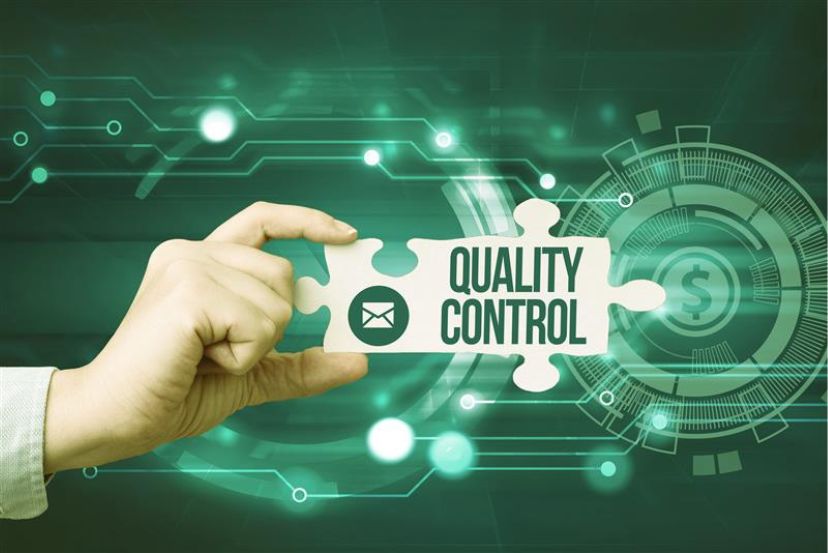
How CPOs Can Navigate Packaging Compliance and Regulations
Understanding the Role of CPOs
Chief Procurement Officers (CPOs) play a pivotal role in ensuring that their organizations remain competitive and compliant in today’s rapidly evolving packaging industry.
Packaging compliance goes beyond aesthetics and functionality; it involves adhering to legal regulations, environmental standards, and industry norms.
For CPOs, understanding and managing packaging compliance is not just a legal necessity but a strategic advantage.
In this blog, we’ll navigate some packaging compliance and regulations crucial for CPOs.
Why Packaging Compliance Matters for CPOs?
Adhering to packaging compliance and regulations is crucial for several reasons:
- Legal Obligations: Ensures that the organization avoids hefty fines and penalties.
- Sustainability Goals: Aligns with growing consumer demand for eco-friendly and sustainable packaging.
- Market Access: Compliance is often a prerequisite for entering specific markets, especially in exports.
- Brand Reputation: Non-compliance can lead to recalls or damage to a brand’s credibility.
By understanding and implementing these regulations, CPOs can safeguard their company’s operations and contribute to long-term growth.
Key Packaging Compliance and Regulations in India
India’s regulatory framework for packaging is designed to promote sustainability, consumer safety, and environmental conservation.
Below are some critical compliance aspects every CPO should know:
1. Plastic Waste Management Rules, 2016 (Amended in 2022)
- Bans single-use plastics to minimize environmental pollution.
- Mandates Extended Producer Responsibility (EPR), requiring manufacturers and importers to ensure proper disposal and recycling of their plastic waste.
- Emphasizes the use of recyclable or biodegradable materials.
Tip: Align packaging materials with EPR guidelines to ensure compliance and promote sustainability.
2. Food Safety and Standards (Packaging) Regulations, 2018
- Applies specifically to food packaging materials to ensure consumer safety.
- Strict standards for food packaging material, including labeling requirements and quality specifications.
- Prohibits the use of recycled plastics for food packaging.
Action Point: Partner with FSSAI-compliant suppliers to ensure all packaging materials meet required standards.
3. Bureau of Indian Standards (BIS) Certification
- Ensures that materials used for packaging meet quality and safety benchmarks.
- Required for certain industries, including pharmaceuticals and food packaging, to meet quality benchmarks.
Focus Point: Partner with certified vendors to simplify compliance processes.
4. Consumer Protection Act, 2019
- Requires packaging to include clear and accurate labeling, including MRP, batch number, and expiration dates.
- Inaccurate or incomplete packaging details can result in legal challenges and consumer trust issues.
- Recommendation: Conduct routine audits of packaging labels to ensure compliance.
5. Sustainable Packaging Initiatives
The Indian government actively encourages sustainable packaging practices, focusing on reducing waste and carbon footprints. Examples include:
- Incentivizing the use of biodegradable and compostable materials.
- Promoting the adoption of reusable packaging models in e-commerce.
Sustainability Insight: Aligning with these initiatives not only ensures compliance but also appeals to environmentally conscious consumers.
How Moglix Simplifies Packaging Compliance for CPOs
Moglix, a leading B2B platform, is committed to helping businesses streamline their packaging compliance processes. Here’s how Moglix can assist:
- Compliant Packaging Solutions: Offers a wide range of products that meet all Indian government regulations, from EPR-compliant plastic alternatives to FSSAI-approved food-grade materials.
- Vendor Verification: Collaborates with certified suppliers to ensure all products adhere to BIS standards and other regulatory requirements.
- Sustainability Support: Provides eco-friendly packaging options that align with the latest sustainable packaging initiatives.
- End-to-End Transparency: Enables real-time monitoring of compliance metrics, empowering CPOs to make data-driven decisions confidently.
By partnering with Moglix, CPOs can reduce the complexity of managing packaging compliance while focusing on their core objectives.
Conclusion: Empowering CPOs Through Compliance
Packaging compliance has evolved into a strategic necessity for CPOs striving to drive business success while adhering to regulatory and ethical standards.
By understanding the key regulations and leveraging partners like Moglix, procurement leaders can ensure seamless compliance, enhance sustainability efforts, and protect their organization’s reputation. For inquiries, please reach out to us at info@moglixbusiness.com .



